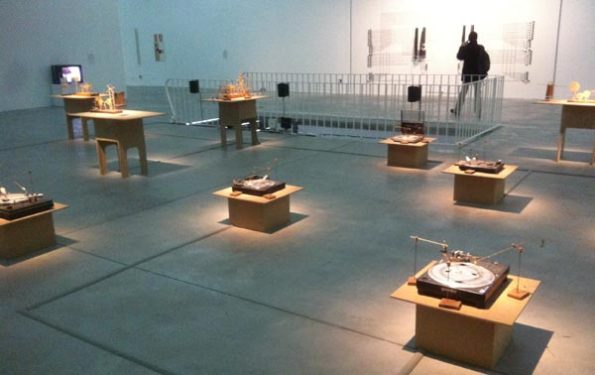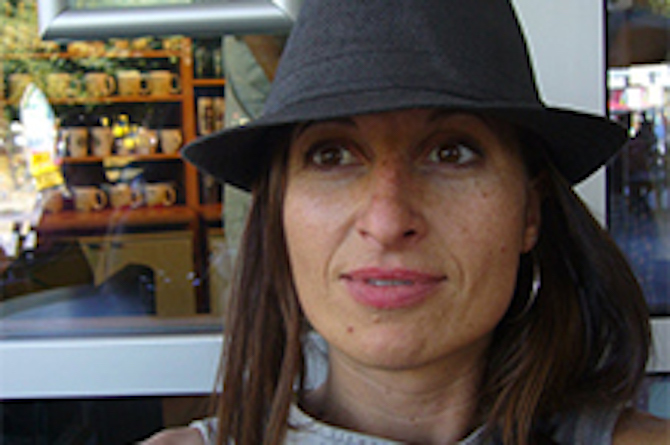Search
To search for an exact match, type the word or phrase you want in quotation marks.
A*DESK has been offering since 2002 contents about criticism and contemporary art. A*DESK has become consolidated thanks to all those who have believed in the project, all those who have followed us, debating, participating and collaborating. Many people have collaborated with A*DESK, and continue to do so. Their efforts, knowledge and belief in the project are what make it grow internationally. At A*DESK we have also generated work for over one hundred professionals in culture, from small collaborations with reviews and classes, to more prolonged and intense collaborations.
At A*DESK we believe in the need for free and universal access to culture and knowledge. We want to carry on being independent, remaining open to more ideas and opinions. If you believe in A*DESK, we need your backing to be able to continue. You can now participate in the project by supporting it. You can choose how much you want to contribute to the project.
You can decide how much you want to bring to the project.

Understanding art as a place for experimentation and approaching science to shatter closed spaces and assumed principles. The exhibition “Estación Experimental” (Experimental Station) is a point of encounter where what stands out is a desire to expand mentalities and propose other schemes for work, in art as much as in other fields of knowledge.
It is nothing new, the relation between art and science has been thought about, and studied, assumed as a methodology. Creators without method, and admired without proof, by scientists. There remains a certain need to re-establish links. Proof of this is the exhibition “Estación Experimental: Investigaciones y fenómenos artísticos” (Experimental Station: Research and artistic phenomena) that is currently on show at the Laboral Centro de Arte y Creación Industrial in Gijón, that was previously inaugurated at the CA2M in Móstoles. Under this epigraph many images come to mind but it is convenient to consider this “Estación Experimental” and think, once again, about what in his day, John Cage said: “Art is a sort of experimental station”. This is continued with the subtitle that the curators, Virginia Torrente and Andrés Mengs, have added: research and artistic phenomena.
Assuming that science considers everything, how can one understand the predominant lack of answers? To enter here would lead, without a doubt, to an endless set of questions. So it is better to situate ourselves within the artistic sphere and await a proposal. Torrente warns us: that we live between the invented world and the natural world. The production of art is in itself affected by both.
From there they manage to trace a path that makes it possible not just to reconsider curatorial questions (particularly in allusion to the vast collection of shows governed by “the chronological” or “the stylistic”), on the one hand, the pertinent selection that has been made (apart from the odd exception) and on the other, and here I pinpoint the centre, the line that they have known how to maintain, between criteria and specificity, regarding the attention required by art, science and technology (worth remembering some of the previous ones “feedback” –curated by Christiane Paul and Jemima Rellie and Charlie Gere or “Feedforward. El Ángel de la Historia”- mediated once again by Paul, and Steve Dietz).
The inexistent pathways make it possible to ambulate through the two rooms, without establishing any order, making it possible to come close, necessarily through reflection, to thinking about experience, literally. At this point we already enter into a certain practice close to that of the laboratory. Enter, pause, experiment and think. Perhaps it is in the order of production where the difference between art and science lies: think and experiment? Experiment and think? (It is also true that for both, intuition ends up being indispensable, as Bergson warned us).
The user finds a sort of disorganised structure, upon which stimuli are received, originating in what is generated by the space: images, sounds, mists and kinetic distortions. It is worth fixing on the state of this individual in situ, it is worth imagining that we also expose ourselves. The comparison is not gratuitous, to stop in any city today leads us into a sort of parallel situation: movement, image, noise and smoke. In all of it there exists a subtle wink, a proposal that hides a hypertext and which, as a paradigm, is the only thing that returns us to this place, to situate us, alone, in the face of the universe. There where the scientific desire originates, where the infinite voyage of scientific knowledge begins. The show manages to return us to a present time, in which we can consider ourselves. This is what causes the whole to relate to the political, the last aim to be achieved. The exhibiting space is revealed as a parable of our social climate, a climate that is always a sum of political, economic, scientific and artistic intentions, amongst so many others.
In the large majority, it is always difficult to apprehend group shows, where pieces are presented in states in which the phenomenological establishes the order of the discourse. The sum, of trials and exercises, that lends visibility to the existing relation between the “facts” and this ambit in which reality is made present through consciousness. We could think, in much the same way that accusations are made of phenomenology, of not arriving at the object in itself, that the pieces remain in a degree of objective incomprehension, however, attending to the artistic fact, it is worth clarifying how they are resolved through a personal investigation of the surroundings. I am thinking, to give an example: of the “Serie Misfits” (2011) by Guillem Bayo, in which a hose perceives us and then reacts; “Despectáculo” (2011) by Luis Bisbe, who in exploring space, returns us to it. Of “Demonstrations” (2005-2008) by Caleb Charland, photographs that direct us to the inexplicable; “Tones in the voice of Shadows” (2011) by Esther Mañas and Arash Moori, in which sound, light and space encapsulate experience; or the installation “Physical Geology (New Landmass/Fast Time)” (2009) by Iliana Halperin, in which the artist combines personal experience and scientific theory, with the aim of providing an answer to the idea of geological time. The search leads to experience, nothing more, which is how the screeches of the “Sound Machines” (2009) by O Grivo are presented in the space, returning us to the contemporary here and now, by way of the acoustic unease that they unfold. The political also appears as an enigma of the present in “The limitations of Logic and the Absence of Absolute Certainty” (2010) by Alistair McClymont, where a tornado, without failing to remind us of this loss of the individual in the social, also manages to question the nature of display.
About the order to which I alluded to previously, that is to say, that presents itself as chaos, the equation is resolved. Metaphor served by a universe with its own order and anarchic explanation. Particles (the pieces) which in recognising themselves as being in constant change establish their own system, based on this “experientia” of Latin origin, that generates knowledge through multiple experiences.

Imma Prieto has for years been marking out three paths from which to reflect about the different contexts that characterise our contemporaneity. Criticism, curating and teaching enable her to think about and establish dialogues from different perspectives and with different objectives, looking for bridges between them. Her research has revolved around performance and video, languages that both arose in the dawn of the sixties that is, in the last years of modernity. Is it because we don´t really know where we are now? Conclusion?
"A desk is a dangerous place from which to watch the world" (John Le Carré)